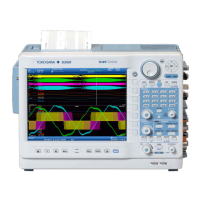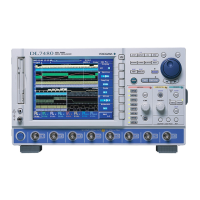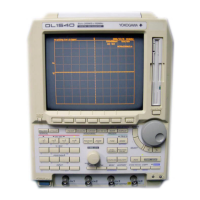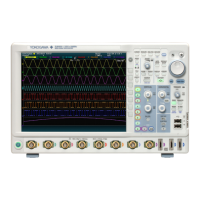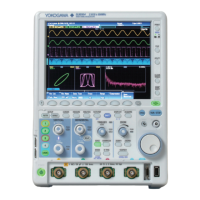6-2
IM DLM6054-01EN
Explanation
Trigger Mode (Mode)
Auto: If the trigger conditions are met within approximately 100 ms, the DL6000/DLM6000
updates the displayed waveforms on each trigger occurrence. If not, the DL6000/
DLM6000 automatically updates the displayed waveforms. If the time axis is set to a
value that causes the display to switch to roll mode (see page 2-6), roll mode display will
be enabled.
Auto Level: If a trigger occurs before a timeout, the DL6000/DL
M6000 updates the waveform in the
same way as Auto mode. If a trigger does not occur, the DL6000/DLM6000 automatically
changes the trigger level to the center value of the trigger source amplitude, triggers
on that value, and updates the displayed waveform. Auto Level mode is valid when the
trigger source is set to a channel from CH1 to CH4. For all other cases, Auto Level mode
operates in the same way as Auto mode.
If the time axis is set to a value that would cause the display to switch to roll mode, roll
mode display will be enabled.
Normal: The DL6000/DLM6000 only updates the waveform
display when the trigger conditions
are met. If no triggers occur, the display is not updated. If you want to view waveforms
that the DL6000/DLM6000 cannot trigger on, or if you want to check the ground level,
use Auto mode.
N Single: The DL6000/DLM6000 acquires signals each time the trigger conditions are met until a
specified number of signals have been acquired, and then displays the waveforms of all
of the acquired signals.
Note
• Single Mode
There is also a Single trigger mode in which the DL6000/DLM6000 up
dates the displayed waveform once
and stops waveform acquisition when the trigger conditions are met. Press SINGLE on the front panel to
execute Single Mode waveform acquisition.
• The trigger mode setting applies to all trigger types.
• The trigger conditions that were used to acquire the displayed wavefo
rm appear at the upper right of the
screen.
Hold-off Time
This setting is used to prevent the DL6000/DLM6000 from triggering the specified time after a trigger
occurrence. This is useful when you want the DL6000/DLM6000 to trigger in sync with a repeating
signal.
Input signal
Repeating interval: T
Trigger level
Trigger source
signal
t
Trigger signal that has been filtered using hold-off time t (when the trigger slope is set to rising edge)
Hold-Off Time Range
You can set the hold-off time to a value in the range of 20 ns to 10.0000 s in 5 ns steps (the default
value is 20 ns).
Note
• In repetitive sampling mode, waveform updating may slow down. If this happens, reduce the hold-off time
setting.
• T
o set the hold-off time to 100 ms or longer, set the trigger mode to Normal.
• Y
ou cannot set the hold-off time when UART signal triggering is enabled.
6.1 Setting the Trigger Mode and Hold-off Time

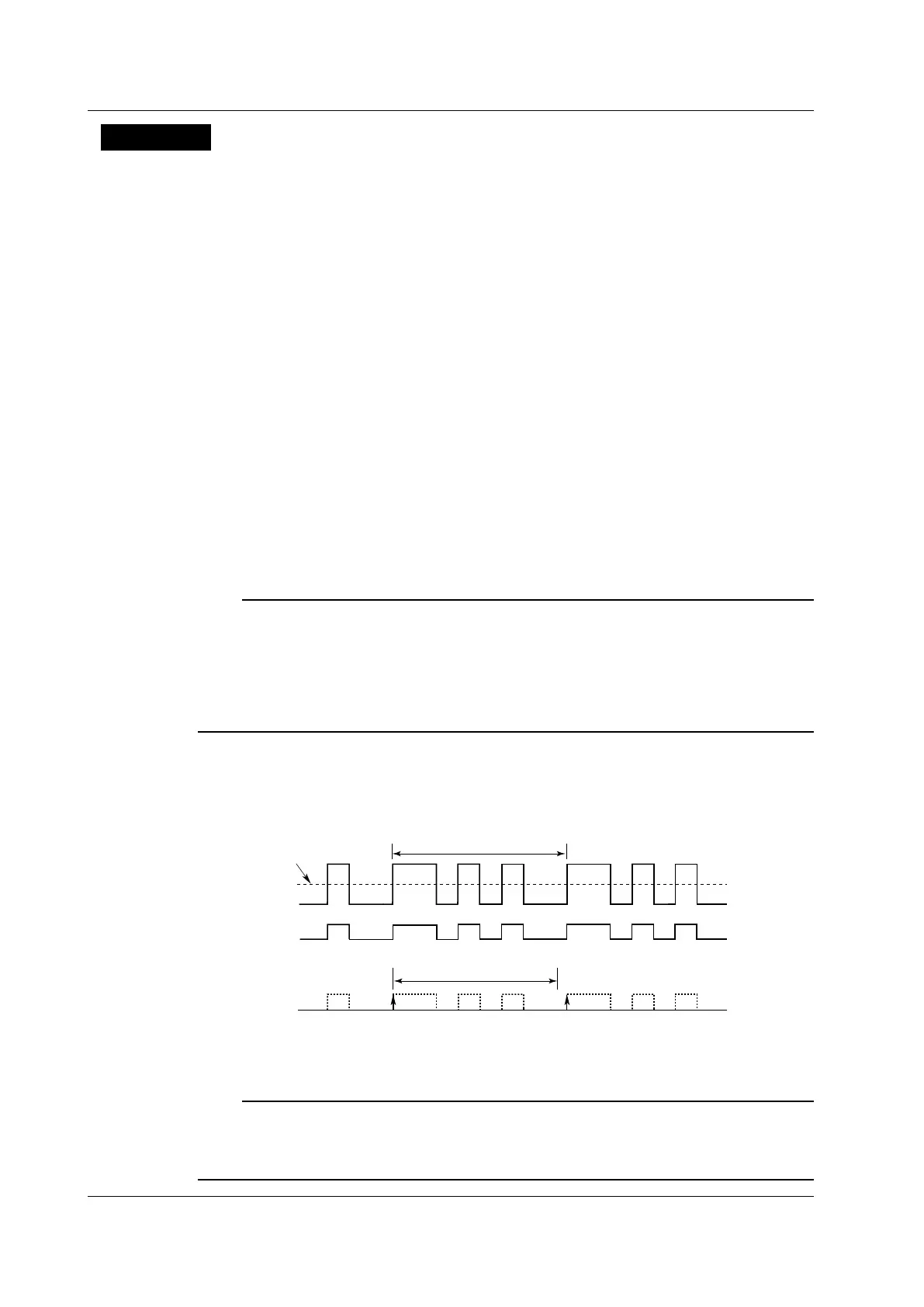